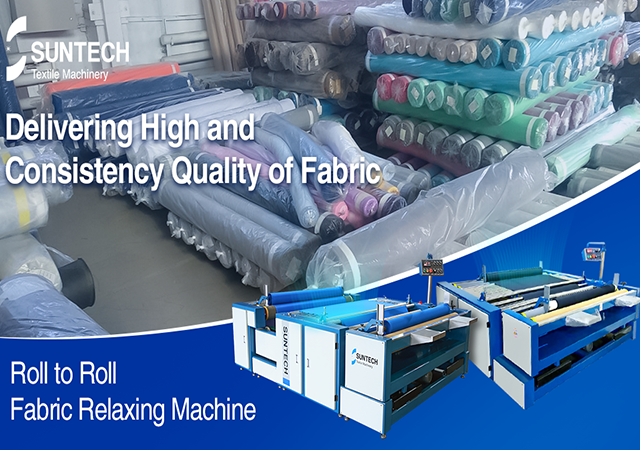As the landscape of the fashion industry undergoes continuous transformation, the concept of fabric relaxation emerges as a crucial consideration. How a fabric unwinds and recovers from the stresses of production can profoundly influence the final product's aesthetics and tactile experience. In this blog, we delve into the significance of fabric relaxation in the fashion sector and underscore why comprehending this process is imperative.
Understanding Fabric Relaxation
Fabric relaxation is the practice of allowing a fabric to rest and recuperate from the tensions it encounters during the manufacturing process. This step is vital because most fabrics undergo varying degrees of stress during production, leading to potential distortions or irregularities in the weave or knit. While fabric relaxation can occur naturally over time, the fashion industry often expedites this process through techniques like steaming.
Introducing the SUNTECH Fabric Relaxing Machine
For those seeking a transformative solution to enhance knit fabric production, the ST-FRM-VI(P) Fabric Relaxing Machine stands as a game-changing innovation. This cutting-edge machine offers an ultimate remedy for fabric tension challenges, ensuring a seamless unwinding and relaxation process every time.
Distinguished from conventional fabric relaxation methods, our machine incorporates a state-of-the-art air-floating mechanism and an advanced tension control system. These elements collaborate to deliver immediate and consistent tension control, bidding farewell to out-of-tolerance cut parts and welcoming flawless rolls consistently.
Whether you operate on a small or large scale, the ST-FRM-VI(P) Fabric Relaxing Machine guarantees unparalleled results, elevating your production capabilities. Waste no time; upgrade your production line today and witness the transformative impact on your factory!
The Impact of Fabric Relaxation on the Fashion Industry

Enhanced Garment Quality
The primary advantage of fabric relaxation lies in its capacity to enhance the overall quality of garments. Allowing the fabric to relax facilitates a return to its natural state, minimizing distortions or irregularities that may have arisen during production. This results in a smoother, more even fabric that drapes elegantly and feels exceptionally comfortable on the body.
Improved Fit
Fabric relaxation plays a pivotal role in determining the fit of a garment. Tightly woven or knit fabrics can create tension, resulting in garments that are overly tight or restrictive. Allowing the fabric to relax enables it to loosen up, simplifying the tailoring process for achieving the desired fit.
Mitigated Shrinkage
An additional benefit of fabric relaxation is its role in reducing shrinkage. Tension during production can cause fabrics to shrink when laundered. Allowing the fabric to relax before cutting and sewing minimizes this risk, ensuring a more consistent and predictable final product.
Advancing Sustainability
Fabric relaxation contributes to a more sustainable fashion industry by decreasing the tension fabrics undergo during production. This reduction in tension minimizes waste and fabric scraps. Additionally, the improved quality and longevity of garments reduce the need for frequent replacements, ultimately curbing textile waste.
Increased Efficiency
Fabric relaxation enhances production efficiency by reducing the likelihood of errors and inconsistencies. Allowing the fabric to relax before the cutting and sewing phases streamlines the production process, saving valuable time and resources. Moreover, it minimizes the necessity for frequent adjustments and alterations, contributing to a more efficient and profitable business model.
Fabric relaxation plays a pivotal role in shaping the fashion industry. Allowing fabrics to recover from the stresses of production not only improves the quality, fit, and sustainability of garments but also enhances production efficiency. In the dynamic evolution of the fashion sector, understanding the impact of fabric relaxation is indispensable for fostering a more sustainable, efficient, and profitable business model.




